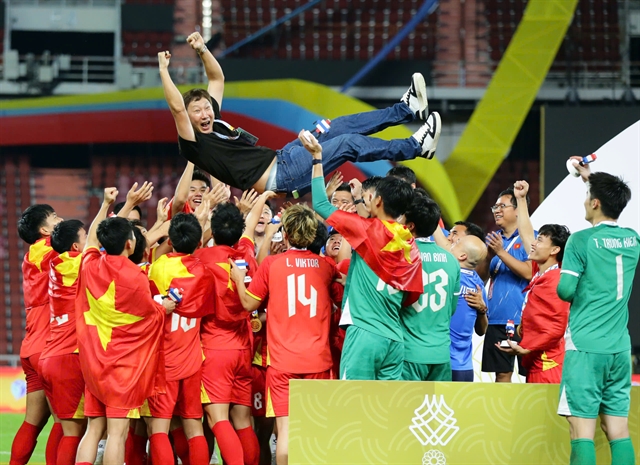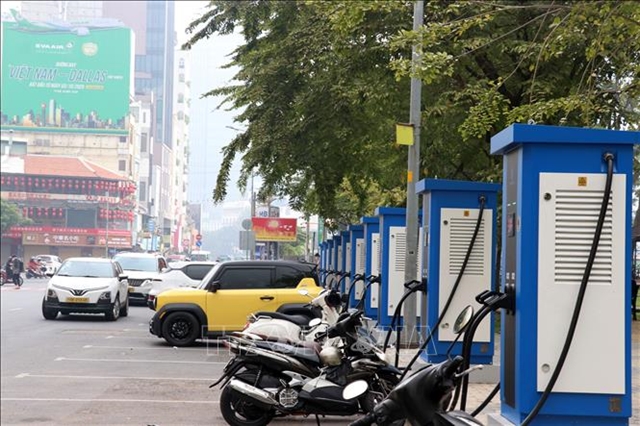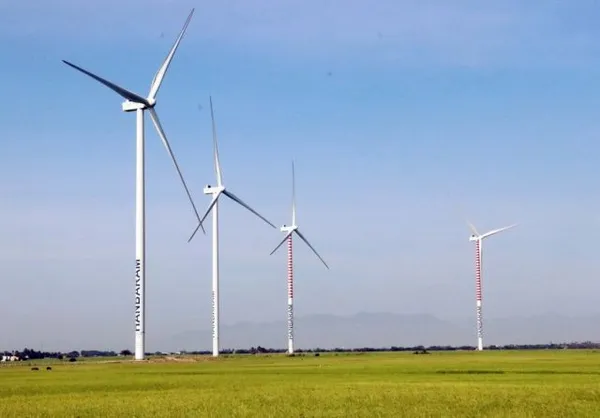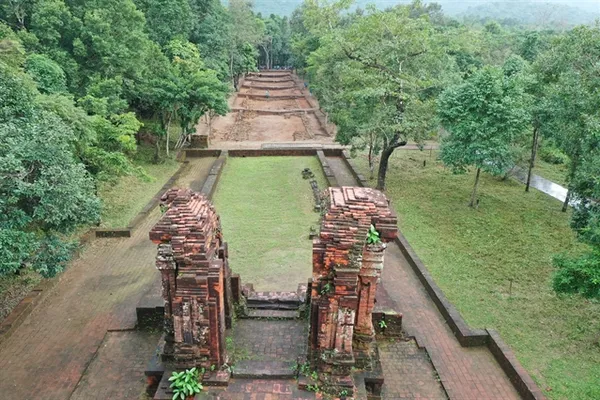 Life & Style
Life & Style

A constant stream of vehicles have been flowing to Nghĩa Lĩnh Mountain in Phú Thọ Province to commemorate the Hùng Kings and the early ancestors of the Vietnamese people.
 |
| Organisation: The event is better organised this year, according to visitors. VNS Photo Trần Mai Hưởng |
PHÚ THỌ — A constant stream of vehicles have been flowing to Nghĩa Lĩnh Mountain in Phú Thọ Province to commemorate the Hùng Kings and the early ancestors of the Vietnamese people.
Parking lots surrounding the area are practically full as people of all ages and regions arrive to pay tribute to their ancestors.
Stages have been constructed on one main road leading to the mountain, where musicians and artists are performing, bringing a festive atmosphere to the area.
The stream of people continue from the parking lots up the mountain, where they pass Đền Hạ (Low Temple), Đền Trung (Middle Temple) and Đền Thượng (Upper Temple), as well as the Hùng King Mausoleum and Đền Giếng (Well Temple).
Towards the top of the mountain the journey becomes more challenging, as the crowds congratulate at the temples, although nobody is in a rush, and delight seems to be the overwhelming emotion displayed.
“I visit the site every year on this occasion,” said Mai Trung Tình, from Hà Nội, “I see that this year the organisers have done a better job. Security guards stand along the staircases to support old people and children, and remind people to mind their steps.”
 |
| Pilgrimage: A non-strop stream of people flock to Nghĩa Lĩnh Mountain to celebrate. VNS Photo Trần Mai Hưởng |
Each temple at the Hùng Temples Complex has its own story from the early period of Vietnamese history.
Legend has it that the Lower Temple was where Mother Âu Cơ – who in folk tales the Vietnamese people are said to have descended from – gave birth to 100 eggs, which then hatched into 50 boys and 50 girls, the first of the Vietnamese people.
Inside the temple is a large stele with an engraving of a sentence spoke by president Hồ Chí Minh, it reads: “The Hùng Kings established the country. You and I together should protect the country.”
The Middle Temple is said to be where the Hùng Kings and their generals discussed national issues, and watched over the surrounding landscapes. The Upper Temple on the peak of the mountain is referenced in folk tales to be where holy ceremonies were held, wishing for good weather and bumper harvests.
The Hùng King Mausoleum in the east of the Upper Temple is believed to contain the tomb of the 6th Hùng King.
The Well Temple contains the remnants of an ancient well, which is said to be the mirror that the princesses Tiên Dung and Ngọc Hoa used when combing their hair and doing their make up.
The local authorities of Phú Thọ have prepared extensively for the Hùng King memorial event with both spiritual and festive ceremonies. The event this year is jointly organised by the provinces of Bình Dương, Kiên Giang, Thái Nguyên and Quảng Nam. It runs from April 21 utill April 25 (the 6th to 10th of the third lunar year).
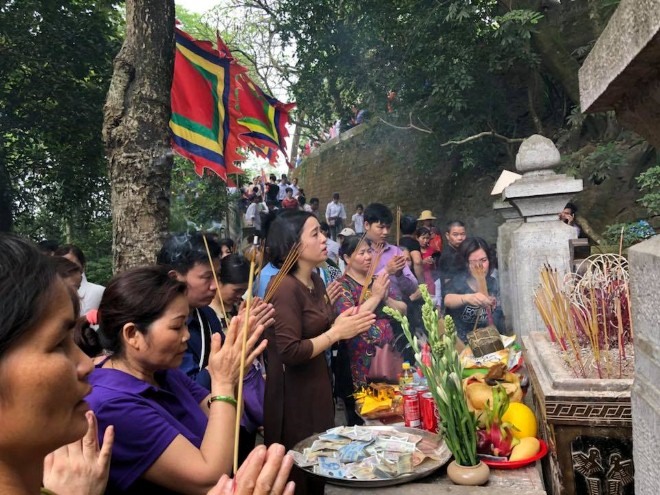 |
| Affection: People from all around the country pay tribute to the Hùng Kings with deep gratitude. VNS Photo Trần Mai Hưởng |
A street festival was held on 21st April, gathering thousands of locals.
Nguyễn Văn Vấn, deputy chairman of Việt Trì City People’s Committee, said the street festival this year was widely supported by locals in both human and financial capactities.
Each of 23 communes, wards and towns in Việt Trì City contributed a performance with a different theme. Nine folk art troupes from nine districts in Phú Thọ Province also joined in the show.
“We performed an ancient dance called Lập Tĩnh, a ritual from the Mature Ceremony of the Dao ethnic group,” said Lý Văn Thu of Kim Thượng Commune, Tân Sơn District, “We were all very happy and proud to be there.”
As well as the festivities, a book fair and photo exhibition are also being held in the centre of Việt Trì City.
The book fair consists of 16 stalls by 13 publishing companies. As many as 15,000 titles are available to buy at the fair, alongside discussions between students and authors.
As many as 100 photos of Phú Thọ and the local people in the area are on displayed at the event.
On the morning of April 23, a palanquin and offering procession was organised by seven communes and wards surrounding the Hùng King Temple Complex.
The palanquin procession featured hundreds of folk dancers and musicians, performing traditional music and dance. Offerings of flowers and cakes were made during the procession, followed by a cake making contest.
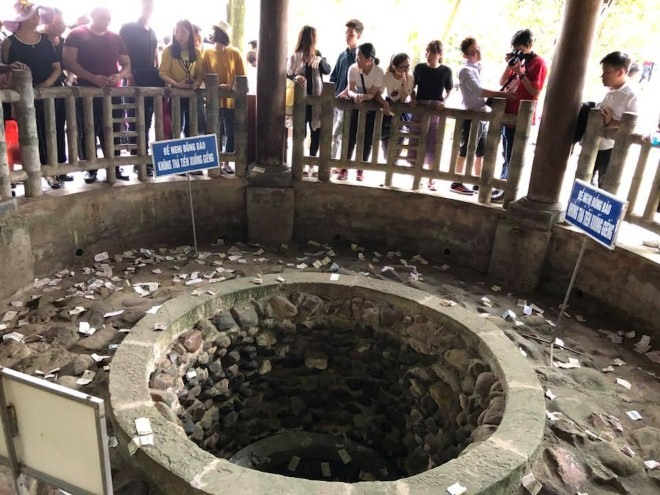 |
| Mirror, mirror: The ancient well said to have been used by princesses to do their make up. VNS Photo Trần Mai Hưởng |
The contest involved 14 teams, who each had 10 minutes to make cakes out of a limited amount of sticky rice.
Teams from Hà Nội and Cẩm Khê District of Phú Thọ Province won the contest. They will have the honour to offer their cakes on the official commemorate ceremony next year.
Vietnamese legend has it that Lạc Long Quân, the son of King Dương Vương, married Âu Cơ, the daughter of the King Đế Lai. Âu Cơ then gave birth to a sack containing 100 eggs, from which 100 children were born.
The couple then decided to separate in order to populate the land. Half of the children followed their mother to the highlands, while the rest went with their father to the sea.
The first child went with his mother Âu Cơ to Phong Châu, now Phú Thọ Province. He then became King Hùng and founded Văn Lang - the first recorded nation in the history of Việt Nam.
Ruling the country for 18 generations, the Hùng Kings taught the people how to grow wet rice. They chose Nghĩa Lĩnh Mountain, the highest in the region, to perform rituals devoted to rice and sun deities to pray for lush crops.

